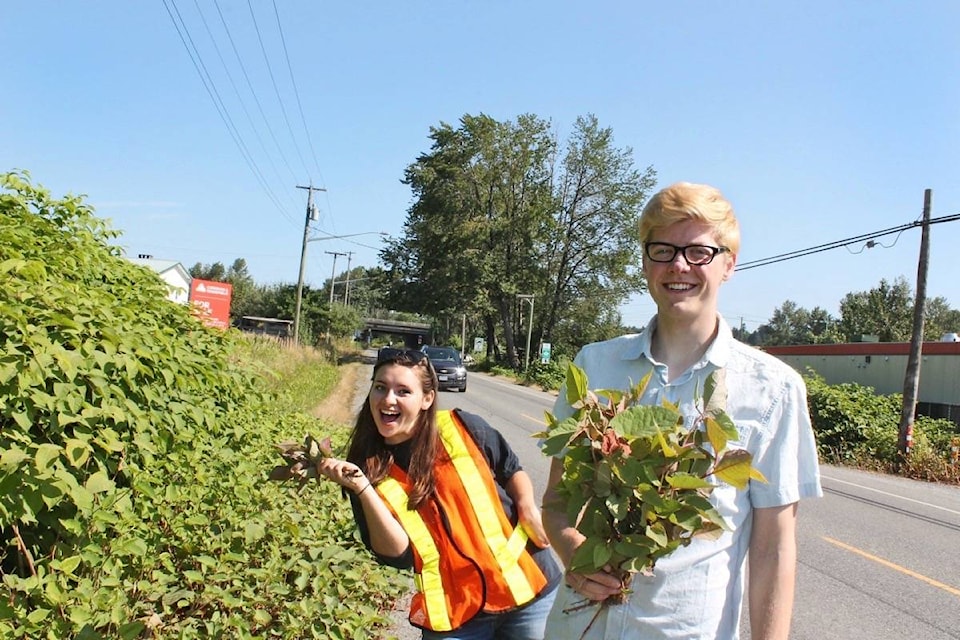By David Clements
At this time of year leaves are either forgotten or seen as a nuisance. This season is called “fall” to signify the falling of deciduous leaves from trees, which enables plants to sleep through the winter.
As the leaves fall in large numbers, it becomes quite a chore for homeowners to keep up.
Meanwhile my research student, Micaela Janse van Renseburg, is on a different leaf mission. Her task has been to assess how much leaves from different knotweed plants differ from plant to plant.
In the United Kingdom, if you pull a leaf off a given knotweed plant, chances are it will look very much like all the other leaves.
The Japanese knotweed in the United Kingdom is one giant clone because it can’t be pollinated. Not so in North America. Here bees and other pollinators take the pollen from giant knotweed to its Japanese cousin. From this we get a new hybrid species, with the moniker “Bohemian knotweed.”
Micaela has been confronted with a bewildering array of leaves of all shapes and sizes. Are they Japanese? Giant? Bohemian? Or what?
And then there’s trichomes. Trichomes are tiny hairs on the leaf surface that are supposed to help tell different knotweeds apart… but our knotweed leaves sport a daunting array of trichomes.
“What are trichomes even for?” inquired another knotweed researcher of mine, Matthew Strelau.
There are a variety of potential answers — reflecting radiation, lowering plant temperature, reducing water loss or providing defense against insects.
So leaves are a lot more than something to rake off your lawn.
They are the engine of the plant, collecting solar energy and converting it to usable forms, which include sugars, starches, spices (plant secondary chemicals) and everything nice.
These products need to be shipped across the leaf through leaf veins, and down through the rest of the plant via a complex plumbing system. As the leaves fall, much of this goodness is shipped down to the roots.
In spring, the plant wakes the energy flows back up through the plant to make new leaves. In the case of maple trees, we intercept some of this to make maple syrup.
As for knotweed, the entire top of the plant dies off in the fall, and come spring, new shoots emerge which leaf out into numerous new leaves for us to study.
There is much more that could be said, but I’ll leave it there for now.
David Clements, Ph.D. is Professor of Biology and Environmental Studies at Trinity Western University
